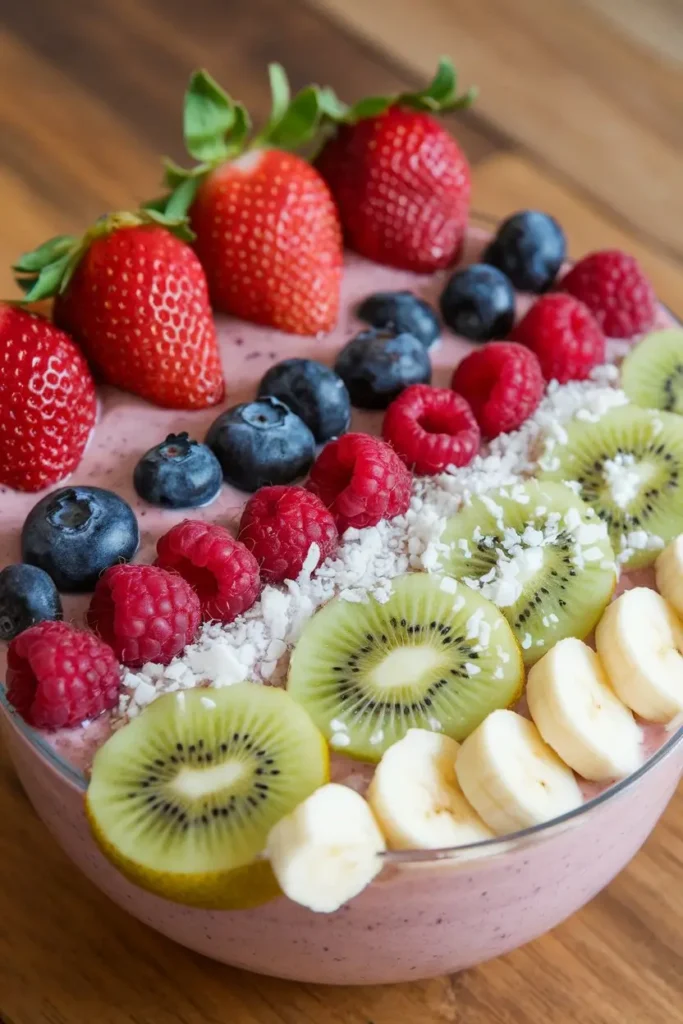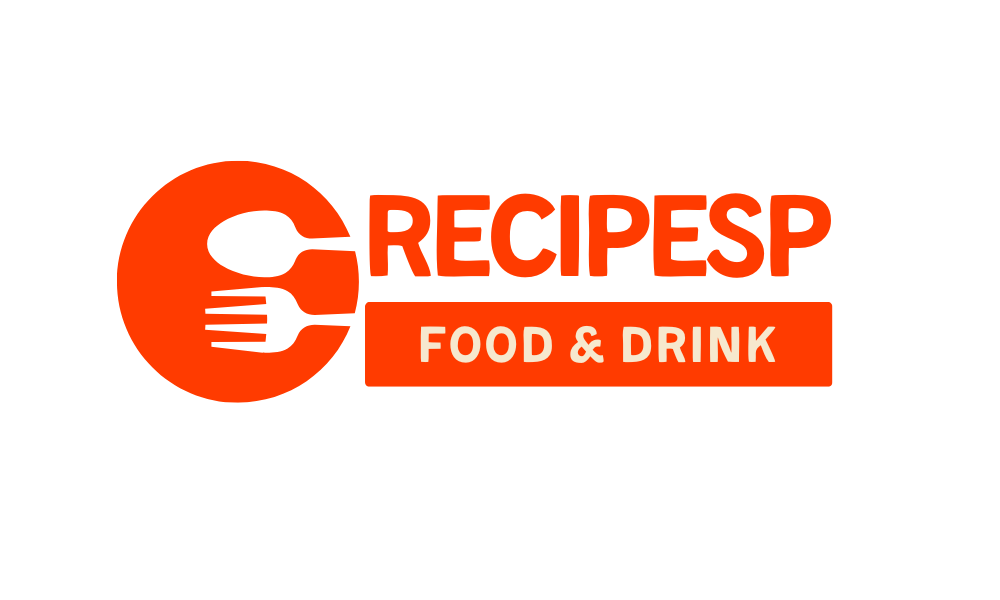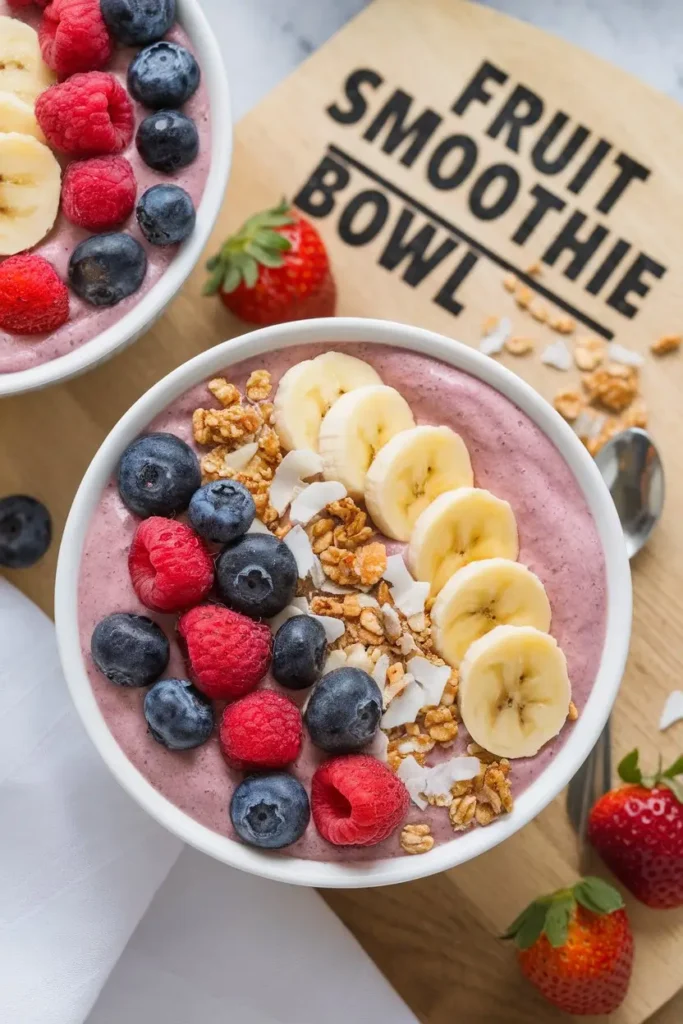The thick, spoonable kind of breakfast that looks good on camera and keeps you full is easier than it seems.
Fruit Smoothie Bowl Mastery: Thick, Nutritious, and Ready in 7 Minutes
Introduction
Is it possible that a fruit smoothie bowl can keep you satisfied longer than a drinkable smoothie? Research on eating rate and texture suggests yes, because thicker textures and eating with a spoon tend to boost fullness and slow intake compared with thin, sip-able blends. That is great news for anyone who wants a fruit smoothie bowl with real staying power, not just a pretty picture. Below you will find a practical, science-aware method for a thick, creamy base with balanced macros, plus toppings that add crunch, antioxidants, and fiber without going overboard.
The focus keyword here is fruit smoothie bowl, and everything below is tuned to help you build one that fits your goals, whether you track calories, target protein, prefer dairy free, or follow plant-based eating.

Ingredients List
This base formula is designed for creaminess, color, and staying power. Swap ingredients based on what you have or your dietary needs.
- Frozen fruit, 2 cups total
- Best combos: banana plus mixed berries, mango plus pineapple, cherry plus strawberry
- Substitutions: use all berries for lower sugar, or mango for a brighter tropical flavor
- Protein source, 20 to 30 grams
- Options: Greek yogurt, skyr, cottage cheese, whey isolate, pea protein, collagen (supports texture but not complete protein)
- Dairy free: soy yogurt or pea protein for a complete amino acid profile
- Liquid, 2 to 4 tablespoons
- Almond milk, oat milk, coconut milk, or dairy milk; start low for maximum thickness
- Creaminess boosters, 1 to 2 tablespoons
- Nut butter, seed butter, avocado, or silken tofu; helps bind ice crystals and increases satiety
- Optional greens, 1 cup loosely packed
- Spinach blends invisibly; kale works if stems are removed
- Flavor enhancers
- 1 teaspoon vanilla, a squeeze of lime or lemon, a pinch of salt, cinnamon, or fresh ginger
- Toppings, 1/2 to 3/4 cup total
- Crunch: toasted granola, cacao nibs, chopped nuts
- Fiber and omega-3: chia seeds, ground flaxseed, hemp hearts
- Fresh fruit: kiwi, sliced banana, berries, pomegranate arils
- Extras: coconut flakes, a drizzle of peanut butter or almond butter, a few dark chocolate shavings
Ingredient notes:
- Banana: one small frozen banana thickens beautifully and smooths acidity from berries.
- Berries: raspberries and blackberries raise fiber and antioxidants while keeping sugars moderate.
- Mango and pineapple: vivid color and tropical flavor, a bit higher in sugars, so pair with extra protein or chia.
- Low FODMAP approach: use firm bananas, strawberries, blueberries, and lactose-free yogurt.
Timing
- Prep time: 7 minutes
- Cooking time: 0 minutes
- Total time: 7 minutes
That is roughly 20 to 30 percent faster than many smoothie bowl recipes that call for chopping, extended blending, or complicated toppings. A strong blender and a smart sequence make the difference.

Step-by-Step Instructions
Step 1: Freeze smart for thickness
- Slice ripe bananas and freeze them on a tray so pieces do not clump. Do the same for mango or pineapple.
- Store frozen fruit in labeled bags with cup measurements noted. Pre-portioning speeds things up and improves consistency.
Tip: Aim for at least half of the fruit to be banana or mango for a creamy base. If you prefer lower sugar, cap banana at 1/2 cup and lean on mixed berries.
Step 2: Chill your bowl and toppings
- Place your serving bowl in the freezer for 5 minutes while you gather toppings. A chilled bowl limits melt and keeps edges from going soupy.
- Pre-toast any nuts or granola in a dry pan for 2 to 3 minutes to intensify flavor without extra oil.
Step 3: Load the blender in the right order
- Add protein source first (Greek yogurt or protein powder), then greens, then frozen fruit on top.
- Sprinkle salt, vanilla, or spices over the fruit, then add 2 tablespoons of liquid.
Why it matters: Heavier ingredients near the blades create friction, which pulls frozen fruit down and blends faster with less liquid.
Step 4: Pulse, tamp, and keep it dry
- Start with several short pulses to break large pieces. Use a tamper to push fruit toward the blades.
- Keep liquid minimal. Add 1 tablespoon at a time only if the blender stalls.
Texture target: Thick, soft-serve consistency that holds a peak. If you can pour it, it needs more frozen fruit or a few ice cubes.
Step 5: Boost creaminess and nutrition
- Blend in 1 tablespoon nut butter, seed butter, or avocado. This reduces ice crystal size and gives a silky mouthfeel.
- For extra fiber and a thicker set, add 1 teaspoon chia or ground flax while blending.
Performance tip: If using whey or pea protein, blend briefly after adding to avoid over-whipping and gumminess.
Step 6: Taste, tweak, brighten
- Taste a spoonful. If it is flat, add a pinch more salt or a squeeze of citrus. If too tart, drizzle a teaspoon of honey or maple, or a couple drops of liquid stevia.
- If color looks dull, a few frozen blueberries or a shake of beet powder can fix it without changing flavor much.
Step 7: Bowl it up and add strategic crunch
- Spread the base into the chilled bowl, then add toppings in rows or clusters.
- Balance the mix: one crunchy element, one fresh fruit, and one seed. That keeps texture exciting without spiking calories.
Designer tip: Vertical piles photograph better than flat scatter. Keep like colors together for a vivid contrast.
Nutritional Information
The sample bowl below is built as follows:
- Base: 1 cup frozen mixed berries, 1/2 cup frozen banana, 3/4 cup nonfat Greek yogurt, 1 scoop whey isolate, 2 tablespoons almond milk
- Boosters: 1 tablespoon almond butter, 1 teaspoon chia
- Toppings: 1/4 cup fresh blueberries, 1 tablespoon hemp hearts, 2 tablespoons toasted low-sugar granola
Approximate nutrition per serving:
| Metric | Amount |
|---|---|
| Calories | 520 kcal |
| Protein | 39 g |
| Carbohydrates | 57 g |
| Dietary Fiber | 14 g |
| Total Sugars | 31 g |
| Fat | 18 g |
| Saturated Fat | 2 g |
| Omega-3 (ALA) | ~1.2 g |
| Calcium | ~350 mg |
| Potassium | ~1,000 mg |
| Vitamin C | >100% DV |
Context:
- Protein in the 30 to 40 gram range supports satiety and muscle protein synthesis after morning training.
- Fiber in the 12 to 15 gram range is linked with better glycemic control and gut health markers.
- If you prefer lower calories, reduce nut butter to 1 teaspoon and toppings to 1/4 cup total, saving roughly 100 to 150 kcal.
Healthier Alternatives for the Recipe
Tailor the fruit smoothie bowl to your goals without losing flavor.
- Lower sugar, same creaminess
- Swap half the banana for frozen zucchini or cauliflower rice. Keep a quarter of a banana for texture and flavor.
- Use mostly berries, which are lower in sugar per cup than tropical fruit.
- High protein without dairy
- Use soy yogurt or silken tofu plus pea protein. Aim for 30 grams protein total.
- High fiber, lower glycemic impact
- Add 1 tablespoon psyllium husk or 2 tablespoons rolled oats to the blend. Let sit 2 minutes before the final pulse.
- Nut free
- Use sunflower seed butter or tahini in place of almond or peanut butter.
- Paleo-friendly
- Skip yogurt and protein powders with additives. Go with coconut milk, egg white protein, and fruit plus chia.
- Iron and antioxidant boost
- Spinach or baby kale in the base, cacao nibs on top, and a squeeze of citrus to aid absorption.
- Post-workout recovery
- Keep carbs moderate to high with banana and mango. Pair with whey isolate or a complete plant protein and a dash of salt.
Serving Suggestions
Make your fruit smoothie bowl feel like a weekend treat any day.
- Tropical crunch: base of mango, pineapple, coconut milk; toppings of toasted coconut, macadamia, kiwi.
- Berry cheesecake vibe: base of mixed berries and skyr; a crumble of high-protein granola and lemon zest on top.
- PB&J style: base of strawberry, banana, and peanut butter; toppings of chopped roasted peanuts and a spoon of chia jam.
- Green glow: spinach, avocado, pineapple base; toppings of hemp hearts, kiwi, and pumpkin seeds.
- Kids’ sampler: three mini rows of different fruit, sprinkle of mini chocolate chips for fun.
- Coffee lovers: a teaspoon of instant espresso in the base, cocoa nibs on top.
Personalization tip: Keep toppings to about 1/2 cup total volume if you track calories. Concentrate the crunch in a few bites rather than covering the entire surface.
Common Mistakes to Avoid
- Over-pouring liquid
- Too much liquid makes the base soupy. Start with 2 tablespoons and add slowly.
- Under-powering the blender
- A small personal blender works, but load order and short pulses are key. A tamper helps break air pockets.
- Skipping salt and acid
- A tiny pinch of salt and a splash of lemon or lime sharpen flavor and balance sweetness.
- Going topping crazy
- Granola, nuts, and coconut are calorie dense. Measure toppings at least the first few times.
- Ignoring protein
- A fruit-only base tastes great but may leave you hungry. Add yogurt, skyr, tofu, or protein powder.
- Using fresh, not frozen fruit
- Fresh fruit makes a drinkable smoothie. For a spoonable bowl, you need frozen fruit or an ice-heavy blend with stabilizers.
Storing Tips for the Recipe
- Prep packs for the freezer
- Combine pre-measured frozen fruit and greens in single-serve bags. In the morning, dump into the blender with protein and liquid.
- Make-ahead base
- Blend the base, then spoon into a freezer-safe container. Freeze for up to 1 month. Thaw 10 to 15 minutes at room temp and re-blend briefly to restore texture.
- Keep toppings crisp
- Store granola and nuts in airtight containers away from humidity. Add just before serving.
- Prevent browning
- If using avocado or apple slices on top, brush with lemon juice. For banana slices, place under a thin layer of granola to limit air contact.
- Fridge life
- A blended bowl keeps texture for 6 to 8 hours if very thick and stored cold, but the best texture is always within 15 minutes of blending.
Your Turn: Make It Today
A thick, spoonable fruit smoothie bowl comes down to frozen fruit, smart load order, minimal liquid, and a balanced set of toppings. Grab your blender, try the base method, and tweak protein and fruit to match your goals. Make one, then share your rating in the recipe card, leave a comment with your favorite topping combo, and subscribe for more weekly breakfast ideas.
FAQs
Q: How do I make it as thick as soft-serve?
A: Use 2 cups frozen fruit, very little liquid, and a tamper. Blend in a tablespoon of nut butter or avocado to reduce ice crystal size. If it pours easily, add more frozen fruit and pulse.
Q: Can I skip banana?
A: Yes. For creaminess without banana, use mango, avocado, or frozen cauliflower rice plus extra protein. A small date or a drizzle of honey can replace sweetness if needed.
Q: What if I only have a basic blender?
A: Pulse in short bursts and scrape down often. Keep batches small and use slightly smaller fruit pieces. Pre-thaw fruit for 3 to 4 minutes to reduce strain, then refreeze the bowl to keep it cold.
Q: How can I raise protein without chalkiness?
A: Mix Greek yogurt with half a scoop of whey or pea protein, not a full scoop, and add a teaspoon of nut butter. That combination smooths texture and improves flavor.
Q: Is dairy free easy?
A: Very. Use almond or coconut milk for the liquid and soy or coconut yogurt plus pea protein for the base. Silken tofu adds creaminess without strong flavor.
Q: Are acai packets a good swap?
A: Yes. Use one unsweetened acai packet with mixed berries and a banana slice or two. Acai adds color and polyphenols but needs a bit of banana or mango for body.
Q: Can I add oats?
A: Rolled oats thicken and add beta-glucan fiber. Blend 1 to 2 tablespoons into the base and let it rest a minute before the final pulse.
Q: What toppings are best for weight management?
A: Prioritize volume and crunch with fewer calories: fresh berries, kiwi, a teaspoon of chia, and a sprinkle of high-fiber granola. Keep nut butter drizzles to 1 to 2 teaspoons.
Q: Does collagen work as the only protein?
A: Collagen helps texture but is not a complete protein. Pair it with Greek yogurt, skyr, soy yogurt, whey, or pea protein for a full amino acid profile.


